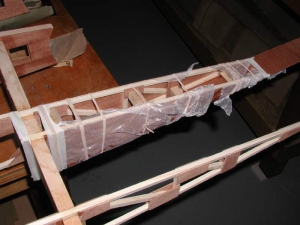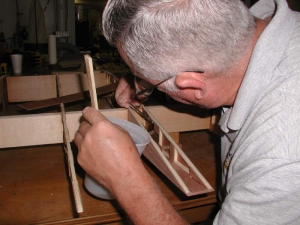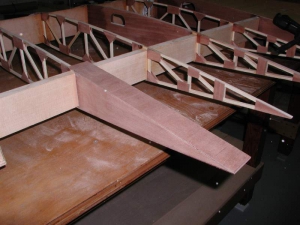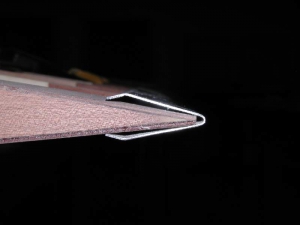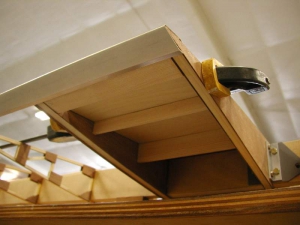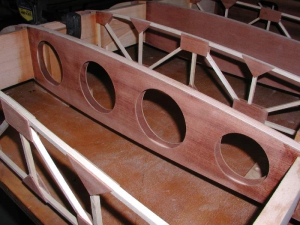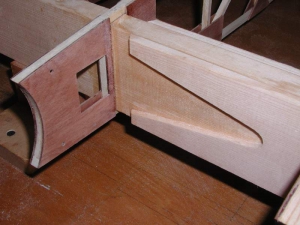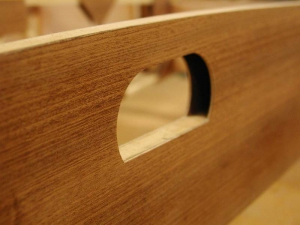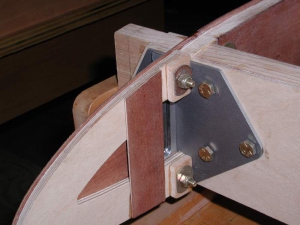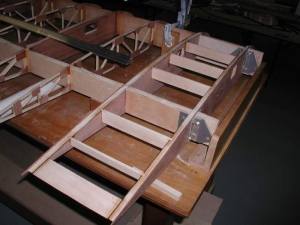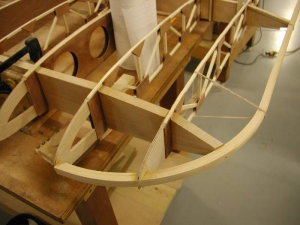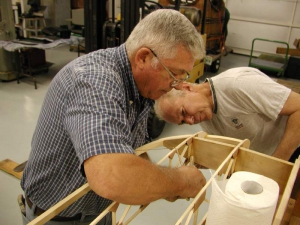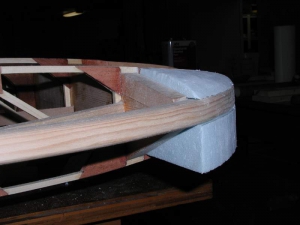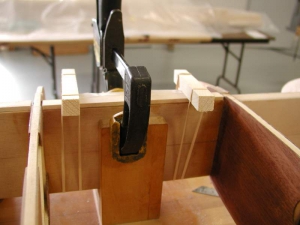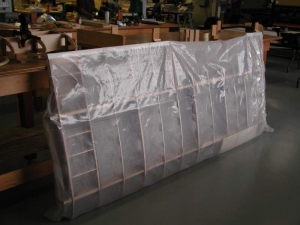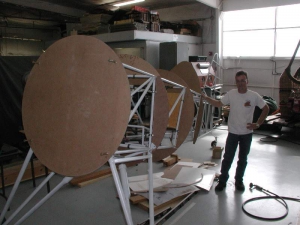November 2003
Article by Mike Whaley
The lower wings were worked on during early November, with a lot of progress being made. The tip bows were installed, as was a lot of secondary structure, gussets, sheeting, wingtip foam, etc. Minor revisions have been made to many parts to improve the final product. On November 7th, Paul took the wing to the Pitts Fly-in in Ozark AL, where a lot of folks got to see it. Comments were favorable. After the fly-in, construction continued. We also began work on the fuselage shape, starting with creating templates for the formers along the fuselage and the turtledeck.
- The wing trailing edge on either end of the aileron wells is completely boxed with plywood for the required stiffness.
- Here, J.C. Taylor seals the wood inside the box with epoxy varnish before it is enclosed. You can never be too careful with wooden wings when it comes to moisture.
- The finished aileron bay end. It is now able to support the fabric and to anchor the trailing edge.
- This shows the shape of the training edge aluminum… this is classical wood and fabric construction.
- The underside of the wingwalk shows several stiffeners and is covered with plywood.
- Plywood plates support compression loads within the wing. Some are full sheets, some can contain lightening holes where the loads are reduced. CNC machining makes the profiling of these plates an “art to part” process.
- These spar doublers have been shaped so as to prevent concentrating stresses in one area of the spar.
- This compression rib is an example of the kind of tweaks we’ve been making as we go along. This pushrod cutout will be re-shaped on production parts to have nice symmetrical arcs that don’t look “chopped off” on the bottom. This is a cosmetic issue and will cause no compromises on the prototype airplane.
- The wing attach plates installed on the forward spar.
- The wingwalk bay before the deck plywood is installed. Another view of the wing attach brackets.
- The wingtip bow is attached. Rubber bands and tiny brads can be a real help in glueing up (the brads are removed later.)
- J.C. Taylor (left) and John Hollister install reinforcements to the wingtip bow. The fabric and ground handling both put a lot of stress on this structure, so it needs to be strong.
- The prototype wingtip is shaped using foam. The prototype woll be used to pull off a mold form which will be used to construct fiberglass wingtips for the production birds.
- The spar cap raises the surface of the spar to provide for a solid glue face between the spar and the plywood leading edge. This forms a strong “D-tube” structure.
- A lower wing is all wrapped up for Paul to take to the big Pitts Fly-In in Ozark, AL. Everyone seemed to really enjoy the “work-in-progress”.
- Fiberboard was used to make initial templates for the firewall and fuselage forming bulkheads. This process takes critical effort and defines much about how the airplane will look when finished. (It also breaks-trail and makes things easy for our builders!) Barrett Brummett has broad experience building aerobatic biplanes, and he did a super job getting the profiles just right.
